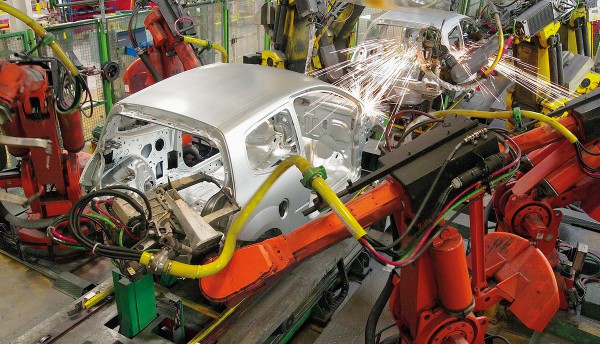
A week has passed since the announcement that ZF Friedrichshafen is to acquire TRW Automotive, creating a combined company that will be third largest supplier in the world after Bosch and Denso, ahead of Continental. But as the dust settles on the deal, what are the potential issues that the new global mega-supplier faces?
New debt
A few of the key financial details of the deal were reported on Friday, revealing the extent of the loans that ZF will be taking on in the deal. ZF will see a dramatic rise in its net debt, expected to rise to around EUR8.5 billion (USD10.9 billion, 19 September 2014) after the acquisition. ZF had no long-term debt before the takeover, and the debt post the deal is expected to be about 2.4 times the company’s earnings before interest, taxation, depreciation, and ammotisation (EBIDTA) in 2013.
The acquisition is backed by a EUR12.5 billion (USD16.1 billion) loan financing from Deutsche Bank and Citigroup. The financing includes a bridge loan, a revolving credit, and bank loans. All the loans are expected to pay interest margins of 225-275 basis points, according to Automotive News Europe. ZF is seeking a credit rating so that it can eventually replace the bank loans with investment-grade bonds. In order to achieve an investment-grade rating, the company needs to bring down its net debt to about 2 times its EBIDTA.
ZF's 2013 turnover was actually smaller than TRW's, bringing to mind the last large merger of two global suppliers; Schaeffler's highly controversial and highly leveraged takeover of Continental in 2008. The acquisition took place just before the global downturn, leading to both entities becoming dangerously overstretched at times during this period, with Continental also servicing high debt payments as a result of its own acquisition of Siemens VDO.
Management still to be sorted
The deal was also famously a hostile one, with numerous boardroom battles through 2008 and 2009. But, in the years since, the increasingly stable board has been able to reap the benefits of their merger. Continental and Schaeffler’s joint purchasing passed USD20bn in 2013, allowing them to reduce costs and enjoy close collaboration with their premium suppliers.
The deal between ZF and TRW appears to be far friendlier though, having the approval of both companies' boards of directors. Commenting on the development, Stefan Sommer, ZF’s CEO, said, "This is an acquisition in the spirit of a partnership. We look forward to welcoming TRW's employees to our company and are committed to working closely with them to realise the potential of this exciting combination." In a combined statement, John Plant, chairman and CEO of TRW, said, "We have long respected ZF as a very successful company in our industry with similar values and focus on innovation.”
However, among the elements yet to be finalised is the new management structure of the merged company. When looking at this, both companies will need to carefully consider their options.
ZF not done with acquisitions?
The USD11.7 billion deal allows ZF to add technology for occupant safety and crash avoidance to its mechanical products, creating a competitive edge for a longer-term future − even with TRW operating as a business unit, both will benefit.
However, ZF’s Stefan Sommer has hinted at further acquisitions, focused this time on the company’s truck businesses. ZF's CVT segment makes chassis and driveline products as well as electronics and software for trucks and buses. In 2013, ZF generated sales of EUR3.24 billion (USD4.5 billion), equivalent to 19.3% of its total sales from the CVT segment.
Opening up markets
The German supplier continues to rely heavily on the European market, which remains fragile despite recent growth. In contrast, vehicle demand is projected to remain robust in North America for the rest of this decade. The combined company will be better positioned to deal with demand fluctuation in these two key markets. Meanwhile, both have focused on international business expansion, specifically on emerging markets, such as Brazil, China, India and eastern Europe. In 2013, TRW had manufacturing presence in 24 countries, while ZF operated 122 production companies in 26 countries.
While ZF says the acquisition will more than double its sales in the United States and China, the combined group will generate about half its overall sales in Europe and the remaining half in North America, Asia-Pacific, and the rest of the world. Both companies have strong research and development (R&D) operations in China, and are currently expanding. According to ZF, the R&D facilities of both companies are within a 30-minute drive of one another.
The move towards automated driving controls, with many expecting the ultimate path to lead to self-driving cars and the combination of each company's expertis,e can make for a powerful automotive supplier. The combined company should be well-positioned for the coming decade and relatively well-balanced in portfolio and regional presence.
The effect on everyone else
The big suppliers in the automotive industry will now be looking at each other and thinking about the potential to do business with each other – and not just through mergers and acquisitions. Since 2008, the traditional models of supplying to carmakers have fundamentally changed. It was the case that research and development was taken care of for them, and that they could offer process and material optimisations and innovations through volume manufacturing or specialist tooling.
Now though, suppliers are increasingly the ones doing the necessary research and development as well. This has allowed them to move from a relatively weak bargaining position to a much stronger one. They are suddenly the ones offering the technical advances and the value creation in automotive that OEMs need.








